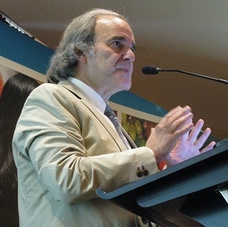 Speaking at Fresh Connections China in Shanghai last week, Exportadora Subsole president Miguel Allamand said a similar trend had been seen in South Korea and would likely take place in Asia’s largest market at some stage.
Speaking at Fresh Connections China in Shanghai last week, Exportadora Subsole president Miguel Allamand said a similar trend had been seen in South Korea and would likely take place in Asia’s largest market at some stage.“In the last years we began putting Thompsons on the back of the container [to South Korea]; just to make it look nice,” he said.
“During the last four years, we as a company have cut back Red Globes in a very significant way, while the seedless varieties, Thompsons and Crimsons, have gone up.
“I think the Chinese market will sooner or later answer to this same trend. I don’t understand why anyone would eat a seeded grape when you can have just as much flavor in a seedless one.”
He said there were some countries in the world where consumers were moving back to seeded varieties, like in Canada and England, but overall demand was moving towards seedless grapes.
Allamand highlighted the approach of grape buyers around the world had also shifted from a focus on price towards more emphasis on quality.
“When we used to have the problems with quality, we would say, well quality’s poor, we have to reduce the price a little bit. Now, when the quality is poor there is no home for the fruit,” he said.
“That flexibility is gone. So on one hand people are asking you for good fruit and are willing to pay for it, but on the other hand there is no flexibility for poor fruit.”
He said labor represented 70% of costs for his company, so there was also a need to use more productive varieties with full flavor, appearance and postharvest characteristics.
“There’s a mandatory need for new varieties which will fulfill all these requirements. The older varieties are very good varieties, but some of these factors are very difficult to handle.
“There are areas in Chile where we are not able anymore to grow Flame Seedless because it doesn’t bring the crop, it splits, it travels with problems, it arrives here tired. You cannot make money out of it. You cannot provide the consumer what he needs at a reasonable cost if you have those varieties.”
He highlighted new varieties – including Midnight Beauty, Sable, and 10-552 – that had strong potential in the East Asian market.
“There’s a bunch of new varieties I think China should jump ahead of us, the growers here, in terms of using our experience to look into these new varieties.”





